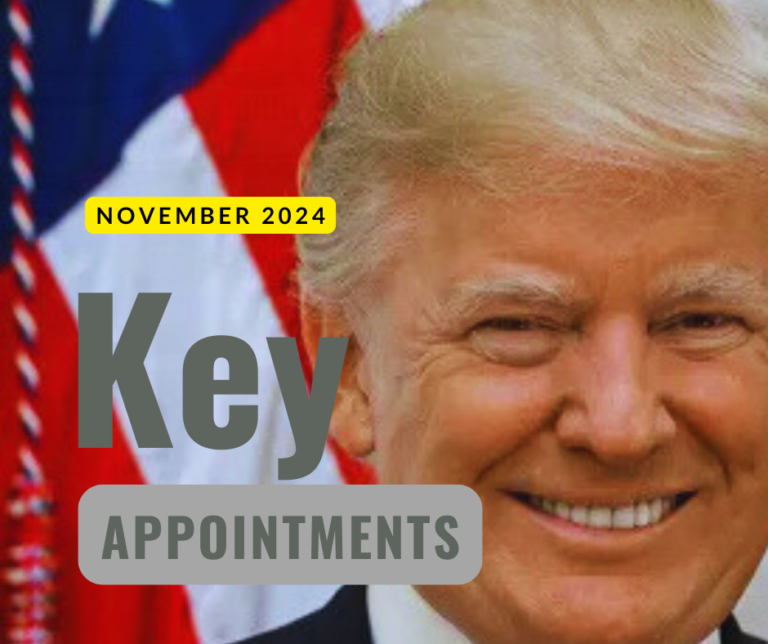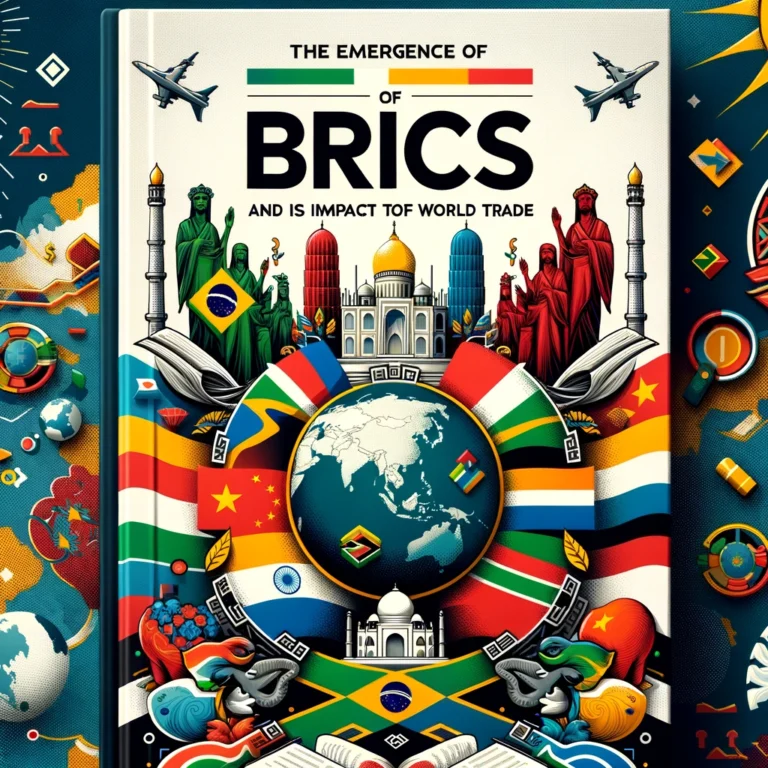
Introduction: The Rise of BRICS
The BRICS group, composed of Brazil, Russia, India, China, and South Africa, represents an increasingly important global force. Initially, these nations were identified for their rapid economic growth and potential to challenge the dominance of the West in international affairs. The concept of BRICS has evolved into a major coalition, pushing for a new balance in global power.
In this chapter, we’ll set the stage by examining the historical context behind the creation of BRICS. Why did these specific nations come together? How do they challenge the dominance of established powers like the United States and the European Union in international trade? We will explore their early economic performance, collective vision, and the growing political clout that allowed them to become a key player on the world stage.
We will also highlight the 2023 BRICS Summit, where discussions around creating an alternative currency to the US dollar and Euro took center stage, signaling a significant shift in the global financial system.
The Evolution of BRICS: From Concept to Reality
The concept of BRICS originated in 2001 when Goldman Sachs economist Jim O’Neill coined the acronym “BRIC” to identify four countries (Brazil, Russia, India, and China) that were predicted to dominate global growth in the 21st century. These countries were experiencing rapid industrialization, technological advances, and economic reforms that made them global economic powerhouses. The addition of South Africa in 2010 solidified BRICS as a formal group.
This chapter will chart the early developments of BRICS, detailing the milestones such as the first BRICS summit in 2009, where the leaders of these nations first began discussing how they could cooperate to reshape global governance structures. The inclusion of South Africa will also be explored, highlighting the strategic importance of adding an African representative to the group. The evolution of BRICS from an economic idea to a geopolitical alliance has had profound implications for global trade and international relations.
The Structure of BRICS: An Overview
Though BRICS is not a formalized trade bloc like the European Union, it has created a flexible framework for cooperation on economic, financial, and geopolitical issues. In this chapter, we will explore the internal structure of BRICS, including key initiatives like the New Development Bank (NDB), established in 2014 to provide an alternative to Western-dominated financial institutions like the World Bank and the IMF.
We will examine the mechanisms through which BRICS coordinates its policies, including the annual summits, ministerial meetings, and the BRICS Business Council. These structures are designed to foster cooperation in areas such as infrastructure development, sustainable development, and the reform of global financial governance. We will also discuss how decisions are made within BRICS, the challenges of balancing different national interests, and the role of bilateral agreements between members.
The Economic Influence of BRICS Countries
BRICS countries collectively represent approximately 40% of the world’s population and nearly a quarter of global GDP. However, each member brings unique economic strengths and weaknesses to the table. This chapter will offer a detailed breakdown of each nation’s economy and their contributions to BRICS as a whole.
- China: The world’s second-largest economy and the largest trading nation, China has been a key driver of BRICS’ economic influence. Its manufacturing and technological sectors have created a powerful export-driven economy.
- India: A rapidly growing economy with a focus on technology and services, India is becoming a global hub for software, pharmaceuticals, and telecommunications. Its demographic dividend— a large, young population— also positions India as a key player in global growth.
- Russia: Rich in natural resources, Russia’s economy is heavily dependent on energy exports (oil and gas), making it a vital player in the global energy market. Its geopolitical influence also contributes to BRICS’ strength in international diplomacy.
- Brazil: As an agricultural powerhouse, Brazil is one of the world’s largest exporters of soybeans, coffee, and beef. Its abundant natural resources make it a key player in global commodity markets.
- South Africa: South Africa’s economy is based on mining, agriculture, and finance. As the most developed economy in Africa, it serves as a gateway for BRICS into the African continent, expanding BRICS’ influence across an emerging region.
BRICS and the Global Trade Landscape
BRICS has altered the landscape of global trade by promoting South-South cooperation and diversifying trade away from traditional Western markets. In this chapter, we will explore the growing trade relationships among BRICS countries, as well as with other emerging economies and regions like Africa, Latin America, and Southeast Asia.
We’ll look at trade agreements, investment partnerships, and the role of BRICS Plus, a mechanism that aims to include additional countries (such as Argentina, Saudi Arabia, and Indonesia) in BRICS initiatives. This expanding circle of cooperation is designed to reshape global trade flows and reduce reliance on Western-dominated markets.
We will also discuss the impact of BRICS on sectors such as energy (especially with Russia and China leading the charge), agriculture (Brazil and South Africa), and technology (India and China). As BRICS countries strengthen trade ties, they challenge the dominance of Western markets in key industries.
The Role of BRICS in International Organizations
BRICS has been an outspoken advocate for reforming global institutions like the United Nations, the IMF, and the World Bank. These institutions, established after World War II, have long been dominated by Western powers. BRICS members argue that the global balance of power has shifted and that these institutions no longer reflect the realities of a multipolar world.
This chapter will explore BRICS’ efforts to reform these organizations to give developing countries more say in global governance. We’ll also delve into BRICS’ role within the G20, where they have often pushed for more inclusive economic policies, and the WTO, where they challenge unfair trade practices imposed by the West. BRICS also created their own multilateral platforms, like the New Development Bank, which provides an alternative to Western-led financing institutions for infrastructure and development projects.
Challenges to the Dollar and Euro: The BRICS Currency
1. Introduction: Why Challenge the Dollar and Euro?
- The dominance of the US dollar in global trade and its role as the world’s reserve currency.
- The vulnerabilities created by US monetary policies and sanctions, especially post-2008 financial crisis and during geopolitical tensions (e.g., US-China trade war, Russia sanctions).
- The Euro’s role and its limitations in addressing the needs of economies beyond the EU.
Key Questions:
- How has reliance on the dollar shaped BRICS economies?
- Are these economies seeking monetary autonomy or just hedging risks?
2. Motivations Behind the BRICS Currency Proposal
- De-dollarization: Reducing reliance on the US dollar to mitigate exchange rate risks and avoid political leverage through sanctions.
- Trade in Local Currencies: China and Russia already engage in bilateral trade using their local currencies. Could a BRICS currency formalize and expand such initiatives?
- Strengthening Sovereignty: Each BRICS nation faces distinct challenges related to dollar exposure—e.g., India’s oil imports are dollar-denominated, Russia faces sanctions, and China holds large US dollar reserves.
3. Economic Hurdles and Coordination Challenges
- Diverse Economies:
- China is an export giant, while South Africa and Brazil depend heavily on commodities.
- India’s economy is largely service-driven, with distinct needs from manufacturing-heavy economies.
- Monetary Policy Conflicts:
- Countries like Brazil and South Africa struggle with inflation, while China manages a tightly controlled currency system.
- Would the BRICS central bank pursue a fixed or floating exchange rate regime?
- Coordination Issues:
- How will monetary sovereignty be preserved? What institutional framework will ensure stability in policy-making?
- Example: Even the EU with its Eurozone faces tensions, despite cultural and economic similarities. The BRICS bloc’s diversity could make such coordination even harder.
4. The Geopolitical Implications
- Impact on the Global Financial System:
- Could a BRICS currency weaken the dollar’s hegemony and alter global trade flows?
- How would Western economies respond if the BRICS currency gains traction?
- Example: Petro-Yuan initiatives have raised concerns among US policymakers.
- International Institutions:
- How will the IMF, World Bank, and SWIFT systems adapt if a BRICS currency challenges their relevance?
- Could a parallel payment system between BRICS countries threaten the US-led financial architecture?
5. Lessons from Existing Currency Unions and Alternatives
- Eurozone Successes and Struggles:
- Example: The Euro faced crises, especially with countries like Greece and Italy during financial downturns. Would BRICS face similar financial contagion risks?
- African Union’s Monetary Ambitions:
- The African Union aims to introduce a unified currency. Are there parallels with the BRICS initiative?
- Cryptocurrency Alternatives:
- Some BRICS countries are also exploring CBDCs (Central Bank Digital Currencies). Could a digital BRICS currency be a more viable alternative?
6. Impact on Global Trade and Emerging Markets
- Trade Diversification:
- A BRICS currency might incentivize trade diversification among emerging markets, reducing dependence on Western economies.
- Volatility Management:
- Could the currency provide stability for BRICS nations, particularly during external crises or global recessions?
- Potential for regional trade blocs (e.g., South-South trade) to emerge stronger.
Will the BRICS Currency Coexist with the Dollar and Euro?
Introduction:
This chapter explores the potential coexistence of a BRICS currency with the dollar and Euro. We will analyze three main scenarios—Coexistence, Replacement, and Limited Success—based on economic trends, geopolitical shifts, and historical precedents.
1. Scenario 1: Coexistence
In this scenario, the BRICS currency emerges as a regional trade facilitator while the dollar and Euro continue to dominate global finance.
- Trade Applications:
BRICS countries could use the currency to settle trade between themselves and with developing nations, bypassing Western currencies for specific sectors (like energy). - Impact on Global Finance:
A dual or multi-currency system could reduce the reliance on the dollar, diversifying global reserves. - Historical Parallel:
The emergence of the Euro alongside the dollar is an example, where both coexist but the dollar retains a dominant role. - Challenges:
Trust in a new currency is key. Lack of political unity or transparency within BRICS could hinder broad adoption.
2. Scenario 2: Replacement
Here, the BRICS currency gains prominence to the point where it challenges or even displaces the dollar and Euro, especially in Asia, Africa, and Latin America.
- Key Drivers:
- Geopolitical rifts and shifting alliances favoring BRICS countries.
- Trade agreements mandating the use of BRICS currency for settlements.
- Weaker confidence in Western economies or monetary policies (e.g., inflation, debt crises).
- Impact on Western Economies:
The U.S. and Europe may face reduced economic influence as countries diversify reserves. - Historical Precedents:
The decline of the British pound as the global reserve currency, replaced by the dollar, offers a glimpse of how dominance shifts.
3. Scenario 3: Limited Success
In this scenario, BRICS faces internal and external hurdles, preventing the currency from becoming a serious alternative to the dollar or Euro.
- Internal Factors:
- Political differences between BRICS nations (e.g., India-China tensions).
- Varied economic priorities and growth rates.
- Difficulty in integrating financial systems across diverse economies.
- External Obstacles:
- Resistance from international financial institutions (IMF, World Bank).
- Sanctions or diplomatic pressure from Western powers.
- Possible Outcome:
The BRICS currency might remain relevant only for regional trade, without significant impact on global financial markets.
Conclusion
Each scenario presents distinct outcomes, with varying levels of disruption to the current financial order. While coexistence is the most likely outcome in the near term, the potential for replacement or limited success cannot be ruled out. The eventual impact will depend on the political cohesion within BRICS, the evolution of trade policies, and the response from Western economies.
The Impact of BRICS on Developing Economies
BRICS has positioned itself as a champion of the Global South, advocating for more equitable global development. In this chapter, we will explore how BRICS initiatives— particularly through the New Development Bank and bilateral trade agreements— have benefited developing economies.
We will examine specific case studies where BRICS investments in infrastructure, energy, and education have spurred economic growth in countries across Africa, Asia, and Latin America. Additionally, we will discuss how BRICS’ influence has provided an alternative to Western-led financial institutions, which often impose strict austerity measures on developing nations.
We will also discuss the potential risks for developing economies as they become more integrated with BRICS. Are these countries exchanging dependence on the West for dependence on BRICS? How sustainable is BRICS-led development in the long term?
The Future of International Trade through BRICS
The future of BRICS will be defined by several key trends. This chapter will explore the potential expansion of the BRICS bloc to include other emerging economies, such as Argentina, Turkey, or even oil-rich nations in the Middle East. We will also explore how digital currencies, blockchain technology, and artificial intelligence could transform trade within BRICS and beyond.
As trade protectionism rises in the West, BRICS countries have an opportunity to expand their influence by promoting free trade among emerging markets. However, the chapter will also look at the internal challenges BRICS faces, including the divergent economic goals of its member states, the risk of political instability, and the effects of climate change on resource-dependent economies like Brazil and Russia.
Chapter 11: Conclusion: The Global Implications of BRICS
In this concluding chapter, we will summarize the main themes of the book, emphasizing the growing influence of BRICS in the global economy. We will revisit the question: Is BRICS a true challenger to Western dominance, or is it merely an alternative power that will coexist with traditional powers like the US and Europe?
The chapter will also reflect on the potential long-term effects of BRICS’ rise, particularly on global governance, international trade, and economic development. Will the rise of BRICS lead to a more multipolar world, or will internal and external challenges limit its impact?
Final Thoughts
This detailed and elaborated Blog offers a comprehensive exploration of the BRICS coalition and its far-reaching impact on world trade and the global economy. It provides an in-depth analysis of BRICS’ rise, the implications of a BRICS currency, and its future role in reshaping international trade. Each chapter has been carefully structured to offer a complete understanding of BRICS, making it an informative resource for those interested in global economics and geopolitics.
Disclaimer
This post was created with the assistance of AI. The authors and the AI do not guarantee the completeness or accuracy of the information contained herein and are not liable for any errors or omissions. The content of this book is intended for informational purposes only and should not be used as a substitute for professional advice or official reports.





